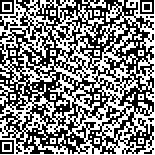| 摘要: |
| [摘要] 目的 评价左束支起搏(LBBP)治疗严重房室传导阻滞的安全性和有效性。方法 选择广西壮族自治区人民医院2019年3月至2020年1月收治的二度Ⅱ型房室传导阻滞或三度房室传导阻滞并行永久起搏器植入的患者60例,采用随机数字表法将其分为LBBP组和右室流出道起搏(RVOTP)组,每组30例。于术中,术后1周,术后1个月、3个月、6个月监测两组的心室电极夺获阈值、电极阻抗、R波振幅,并行心电图检查测定QRS波宽度,行心脏彩超检测左心室舒张末期内径(LVEDd)和左心室射血分数(LVEF),行胸片检查有无电极移位,观察有无起搏器囊袋感染。结果 在随访过程中,两组心室电极夺获阈值均呈下降趋势,LBBP组各时间点夺获阈值水平均显著低于RVOTP组(P<0.05)。两组R波振幅呈上升趋势,电极阻抗呈下降趋势,但两组变化幅度比较差异无统计学意义(P>0.05)。在随访各时间点,LBBP组的QRS宽度均较RVOTP组显著缩窄(P<0.05),但两组LVEDd和LVEF指标比较差异均无统计学意义(P>0.05)。两组均未出现起搏器囊袋感染和起搏器电极脱位。LBBP组出现室间隔穿孔1例,间隔部血管损伤1例。两组术中、术后并发症发生率比较差异无统计学意义(P>0.05)。结论 LBBP治疗房室传导阻滞安全、有效,值得临床推广。 |
| 关键词: 左束支区域起搏 房室传导阻滞 安全性 有效性 |
| DOI:10.3969/j.issn.1674-3806.2023.03.13 |
| 分类号:R 541 |
| 基金项目:广西科技计划项目(编号:桂科AD17129026) |
|
| Evaluation of the safety and effectiveness of left bundle branch pacing in treatment of severe atrioventricular block |
|
LU Zheng-de, SHI Lei, SHI Ying, et al.
|
|
Department of Cardiovascular Medicine, the People′s Hospital of Guangxi Zhuang Autonomous Region, Nanning 530021, China
|
| Abstract: |
| [Abstract] Objective To evaluate the safety and effectiveness of left bundle branch pacing(LBBP) in treatment of severe atrioventricular block. Methods Sixty inpatients with type Ⅱ second-degree atrioventricular block or third-degree atrioventricular block who were treated with permanent pacemaker implantation in the People′s Hospital of Guangxi Zhuang Autonomous Region from March 2019 to January 2020 were selected. The inpatients were divided into LBBP group and right ventricular outflow tract pacing(RVOTP) group by random number table method, with 30 cases in each group. During operation, and 1 week, 1 month, 3 months and 6 months after operation, the ventricular electrode capture threshold, electrode impedance, and R wave amplitude of the two groups were monitored, and the QRS wave width was measured by electrocardiogram. Cardiac color Doppler ultrasound was adopted to detect left ventricular end-diastolic diameter(LVEDd) and left ventricular ejection fraction(LVEF). Chest X-ray was performed to check whether there was electrode dislocation and rountine follow-up was performed to check whether there was pacemaker pocket infection was observed. Results During the follow-up process, the ventricular electrode capture thresholds showed a downward trend in the two groups, and the levels of capture threshold in the LBBP group were significantly lower than those in the RVOTP group at each time point(P<0.05). The R wave amplitude showed an upward trend, and the electrode impedance showed a downward trend in the two groups, but there were no statistically significant differences in the R wave amplitude and the electrode impedance between two groups(P>0.05). At each time point of follow-up, the QRS width of the LBBP group was significantly narrower than that of the RVOTP group(P<0.05), but there were no significant differences between the two groups in LVEDd and LVEF indicators(P>0.05). There were no pacemaker pocket infection and pacemaker electrode dislocation in the two groups. In the LBBP group, there were 1 case of ventricular septal perforation and 1 case of septal vascular injury. There were no significant differences in the incidence rates of intraoperative and postoperative complications between the two groups(P>0.05). Conclusion LBBP is safe and effective in the treatment of atrioventricular block, and it is worthy of clinical promotion. |
| Key words: Left bundle branch pacing Atrioventricular block Safety Effectiveness |

